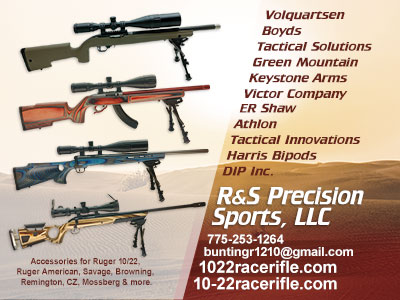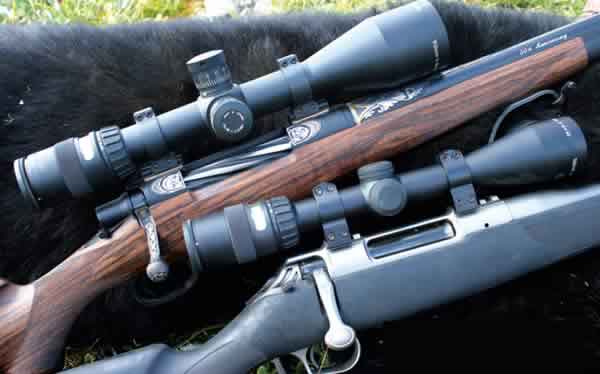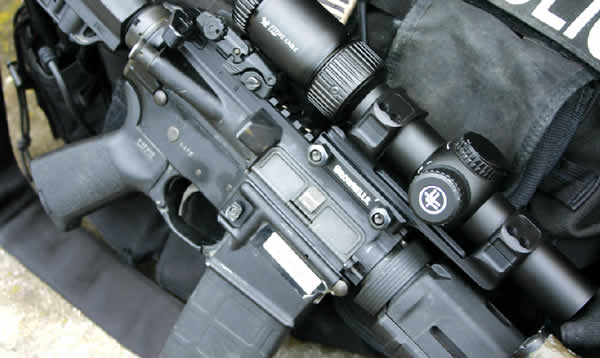
Selecting The Best Optics
Selecting The Best Optics
Story by Tom Claycomb III
We can all boast life lessons that have taught us certain principles. For me, the optics lesson happened years ago. Ed Sweet, the host of Kid Outdoors, and I would take a lot of kids bear hunting. I’d write articles about the hunts and he’d film them for his show. On one of our first hunts we saw 10 bears in two afternoons. Only once did I spot the bear before anyone else. That’s because my partners had good glass. I had an average pair of binoculars and have realized over the years that I had been missing a lot of game. I started a quest to learn more.

Unfortunately, the old saying “you get what you pay for” is never so true as it is in the optics world. When you buy a set, get the best that you can afford and you’ll never be sorry. I’ve heard a lot of people cuss bad optics, but I’ve never seen anyone regret buying good ones.

I thought I knew most of the optic companies out there and had tested products for at least half of them, but then I attended my first SHOT (Shooting, Hunting, Outdoor and Trade) Show years ago. Wow, was I shocked. I bet there were 50 to 75 optic companies on display.

So, who’s the best? What makes one better than another? They all look clear and crisp in the store, don’t they? So how can you tell which one to buy, and why spend $2,000 on a pair of binoculars when you can buy a pair for $99? Why would you buy a spotting scope instead of just using your binoculars or the scope on your rifle? Well, let’s try to get our sights around these questions.
I teach a lot of glassing for big-game seminars, have been sponsored by a lot of optic companies over the years and I still don’t claim to know it all, but here are some of the things I have learned.
What does it all mean?
On an 8×42, the 8 signifies the power or magnification. The second number, 42, is the objective size. You preferably want your objective size to be four times the power. If it is less than four times, it won’t let in enough light for low-light conditions like dawn or dusk. The problem is, the higher the objective, the heavier the weight. Therein lies our dilemma.

If you’re a sedentary hunter, buy a 10×50, but if you’re hiking all day, buy a 10×42. I used to recommend 8×42. My thinking was that when you’re huffing and puffing up a mountain and throw up anything larger than an 8x, you wouldn’t be stable enough to focus. Years ago, however, I realized how much game I was missing, so I now carry a 10x.
What am I doing?
Basically, there are three main options: compact, semicompact and full size. You need to determine your application. Where I live, we often scramble up and down mountains all day; this is why I carry a semicompact version. A full-sized binocular would be too heavy, and I know that I would never carry them. On the other hand, if you live in Texas and hunt out of a blind, then by all means get the larger set.
Now the tough choice: What brand should you buy? There are several good choices on the market. I’m sponsored by Leica and they have top-notch optics. Leupold and Bushnell also offer models that meet different budgets, and both offer decent warranties as well.
To strap or not to strap?
Years ago, everyone used leather straps to carry their binoculars. After a hard day of scrambling up and down it would feel like my neck had been dislocated by all the bouncing around. This is when I discovered Butler Creek elastic straps. They fit like a bra – not that I’ve ever worn a bra – and hold the binoculars against my chest. A lot of people make straps that are similar, but back in the day Butler Creek owned the market.
Spotting scopes
Now let’s cover spotting scopes. Why buy a spotting scope? Why not just use your binoculars? Because you’ll miss a ton of game. What size should you buy? Because of weight, I choose to carry a 35x, which is sufficient for me here in Idaho. If you’re sheep hunting in Alaska, you may want a 60x. You will need to determine where and how you hunt before making your decision.
How to glass
When I glass, I do what is known as “zoning” – no, not fall asleep. I’ll climb to the top of a high ridge and set up. I start viewing towards one end of the mountain and glass across horizontally, then drop down 50 yards and go back. I will do this until I get to the visual bottom. Try to avoid randomly looking around. Have a system or you’ll miss game and never even know it.

Animals feed in and out of cover, so wait a few minutes and repeat glassing. If you glass an area long enough, you’ll grow accustomed to odd-shaped rocks and stumps, and notice when something new appears that wasn’t there before. As the sun moves, shadows may cause things to look different throughout the day too.
One good thing about using a spotting scope is if you see something, you can back away from the optic and let your partner look through. How many times have you seen an elk across a mountain and it’s taken five minutes for your buddy to see it too? Problem solved!
Which is best? A straight or a 45-degree angled optic? Over the years I’ve started favoring an angled neck. To me it’s a little more user friendly and causes less muscle stress throughout the day.
At the end of a hard day of glassing your eyes are going to be strained. You’ll go to bed feeling like you’re seasick or worse, hallucinating. I know everyone is on a budget, but as an old buddy used to say, “On this purchase, don’t leave any change in your pocket.”
Mounted scopes and covers
 Let’s move onto scopes. For fast shots you’ll want a 3x to 9x. They use smaller powers so they can pick up game fast. For hunting out West, you’ll want more magnification for the longer shots you’ll take.
Let’s move onto scopes. For fast shots you’ll want a 3x to 9x. They use smaller powers so they can pick up game fast. For hunting out West, you’ll want more magnification for the longer shots you’ll take.
I love the idea of a scope cover because the last time I hunted deer in Nebraska during a blizzard, I found a deer, threw up my rifle, looked through the scope and it was full of snow. Needless to say, I missed. I’ve tested numerous scope covers over the years and every single one has managed to get hung up on a limb and disappeared. This also goes for the covers on my binoculars. Maybe it is just me.
Cost considerations
Some people will tell you to spend more on the scope than you do your rifle. This is somewhat true, I feel. I have a stainless-steel Remington 700 .338 Winchester Magnum. The scope is a Leupold VXIII 4.5x to 14x, so it’s half again as expensive as the rifle. This must mean that I somewhat agree with this concept.
Optic care and cleaning
It goes without saying, baby them! I don’t strap my rifle on my four-wheeler and go bouncing around. I baby my scope and consequently it stays on tight. It is also not a good idea to leave optics in the blistering sun either.
To properly clean them, Hamilton Boykin at Leica told me to hold them upside down, blow off any loose dust and then pour water on the lens to rinse off. Then with a soft, wet lens rag, wipe them clean in swooping motions. Don’t wipe in a circular motion or you will grind in sand particulates. Spitting on the lenses and wiping them off with your dusty shirt tail doesn’t cut it either.
Try a good optic once and you’ll never go back. AmSJ



